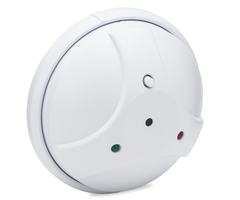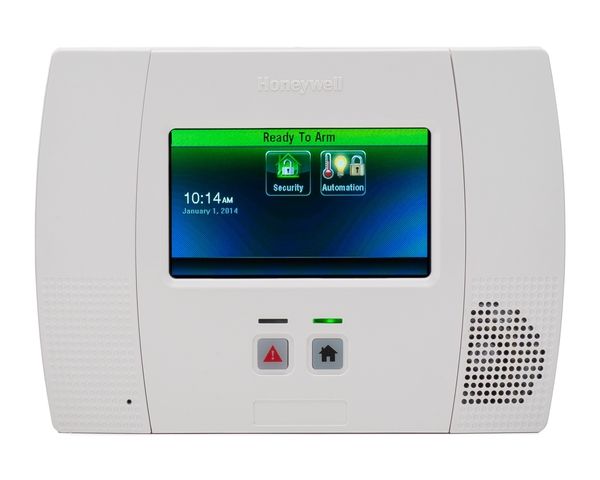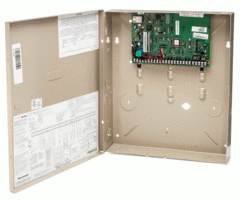Top 5 Sensor Types You Need for Your Security System
Posted By Michael GorisHi DIYers! As you know, you can't have a security system without some sensors! Of course, with all the possible sensor types it can be overwhelming to decide which ones you really need for your system. While nearly every sensor type serves a purpose, these are the 5 we deem most crucial.

5. Glass Break Sensors
Glass break sensors are used to detect broken windows and other glass break events. These devices have built-in microphones, and they actively listen for the sound of breaking glass. Most glass break sensors utilize a dual-sound detection method. This means that the sensor must detect both the low-pitched thud of an object striking against the glass and the high-pitched shattering of the glass itself. This helps prevent false alarms. Glass break sensors are perfect for monitoring for forced entry into your home. You can even use a single glass break sensor to monitor multiple windows in the same room!

4. Environmental Sensors
Environmental sensors include devices like temperature sensors and flood sensors. These sensors monitor for unusual environmental conditions that likely indicate a problem. For example, a flood sensor will let your system know if there is a water leak that could lead to expensive water damage. Meanwhile, a temperature sensor will monitor for unusually high or low temperatures that indicate a broken HVAC system. There are also many environmental sensors that can perform dual functions and operate as both temperature and flood sensors.

3. Life-Safety Sensors
Life-safety sensors are used to monitor for life-threatening environmental conditions, such as a fire or an outbreak of carbon monoxide gas. These include devices like smoke and heat detectors and carbon monoxide sensors. There are also special combination CO and smoke detectors that can monitor for multiple types of life-safety conditions. Enrolling properly functioning life-safety sensors with your system can mean the difference between life and death. And for fires, you will be able to ensure a faster response if one occurs while you are away. These are a must-have for any system.

2. Motion Detection Sensors
Motion sensors are some of the most useful sensors you can add to your system. These devices alert the system upon detecting a change in infrared (IR) energy caused by movement. There are also some motion sensors that use microwave radar technology in addition to passive infrared (PIR). You can install motions inside your home as interior sensors to determine if anyone gains entry while you are away. They are perfect for detecting general activity and movement in areas where none should be present. There are even pet-immune motion sensors so that you won't need to worry about your pets setting them off. Just make sure you choose the installation area carefully.

1. Door & Window Contacts
Door and window contacts are the easiest to use and most effective sensors for any alarm system. They are used for letting your system know if someone opens up a door or window. These sensors usually consist of two parts, which are a sensor and a magnet. The sensor goes on the door or window frame, and the magnet goes on the moving part of the door or window. Opening the door or window will cause the magnet to become separated from the sensor. The sensor will detect this and alert the system. There are also recessed door and window sensors that allow for a more aesthetically- pleasing installation!

Remember, our goal at Alarm Grid is to set you up with the perfect security system for your needs. We also offer top-quality alarm monitoring services that are great for pairing with a new or existing alarm system. If you ever need help designing or using your security system, or if you want to learn more about our monitoring services, please reach out to us! We are best reached by email at support@alarmgrid.com. Or you may call us at (888) 818-7728 during our regular business hours of 9am to 8pm ET M-F. We look forward to hearing from you!




 According to Alarm.com, any non-doorbell camera or SVR device that is online with a strong connection will have the update pushed down automatically. Alarm.com states that 95% of all compatible cameras and accessories have already received the updates. Cameras that are offline or set up with a weak connection will not be able to receive the automatic update. Alarm.com says that they are still trying to get all compatible devices set up with the update.
According to Alarm.com, any non-doorbell camera or SVR device that is online with a strong connection will have the update pushed down automatically. Alarm.com states that 95% of all compatible cameras and accessories have already received the updates. Cameras that are offline or set up with a weak connection will not be able to receive the automatic update. Alarm.com says that they are still trying to get all compatible devices set up with the update.







